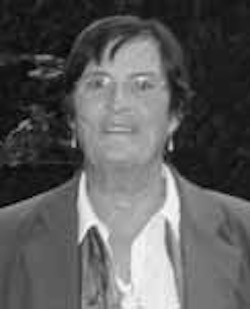Brockley Society is a community association open and free to everyone living in the Brockley Conservation area and anyone adjacent who is interested in the Society’s aims. It was founded in 1974 and is run entirely by volunteers.
You can read or download our founding Constitution here.
We hold and support local events and meetings; our free newsletter is delivered three times a year to 4,000 households in the conservation area. Our objectives are to conserve the area’s unique character, promote local community activity and to work with other groups to improve facilities. Our biggest annual event is the Hilly Fields Midsummer Fayre on the Saturday nearest midsummer’s day.
How Brockley Society began
Brockley is an unusually well preserved enclave, a piece of the architectural and environmental history of this part of London which has survived into the 21st century almost intact.
At Brockley Society’s July 2011 meeting, Gillian Heywood MBE revealed the reasons why the area is still so uniquely rich in High Victorian and Edwardian domestic architecture, historic trees and original lanes and mews. It didn’t happen by chance — it was a direct result of the actions of the founding members of the Brockley Society.
She recounted a fascinating story of how a band of brave souls resisted the brutal designs of the 1960s architects, the demolition plans and greed of developers, and the Byzantine complexities of council planning laws, committees, and sub committees to preserve the character of the area for posterity. They formed a steering committee in about 1970, elected road representatives and swotted up on planning law, civic amenities acts, and government directives. They attended every single meeting of the council planning committees. They wrote a constitution, adopted the Wyvern logo (which had been the family crest of the local landowners in the 18th and 19th centuries) for Brockley Society and kept a sharp eye on every change to window frames, roofs and trees. In the audience on July 19th was one of the founding members of Brockley Society who had chained herself to large trees in front of Rokeby House in the early 1970s to prevent them being chopped down.
Gillian Heywood has been a particularly tireless and formidably well informed campaigner. She received her MBE for ‘Services to the community of Brockley’ in 2007. She described the fight to make as much as possible of Brockley into a Conservation Area because Brockley is largely intact, apart from bomb damage in WWII. Everywhere a 1950s or 1960s building exists, there had been a wartime bomb. We have South London’s largest area of Victorian housing plus Edwardian and early 20th century Arts and Crafts like the St Margaret’s Road area, and there are more stretches of Victorian kerbstone in Brockley than anywhere else in the whole of London.
The timeline of Gillian’s talk began in the late 1960s when most of the war damage had been rectified by building large modern blocks, for example, on Wickham Road and Harefield Road, plus smaller blocks where individual houses had been demolished, for example on Tyrwhitt Road and Adelaide Avenue. When the financial climate improved, developers turned to the Victorian houses which were seen as ‘past their prime’, wanting to demolish them all and build grand new blocks of flats in the ‘modern style’ which would have made them huge profits.
But people were beginning to realise that there was elegance in many of the Victorian and Edwardian buildings, that even the small cottages and town houses on Brockley Road were wonderful to live in and that the roads were well-planned with trees and gardens giving a memory of the orchards that used to cover the area. By 1972 a government directive allowed for conservation areas to be created if they fulfilled the criteria of the 1967 Civic Amenities Act and our original pressure group was formed, stopping all subsequent demolition in 1973 — just too late for three large houses in Tressillian Crescent which had been demolished by a developer who had done so much damage in Brockley Park.
Gillian’s fascinating story of the founding of Brockley Society and the willingness of local people to familiarise themselves with legislation, spend time at meetings and host exhibitions is an inspiring example to us all to keep the momentum going in the 21st century.
P.W.

